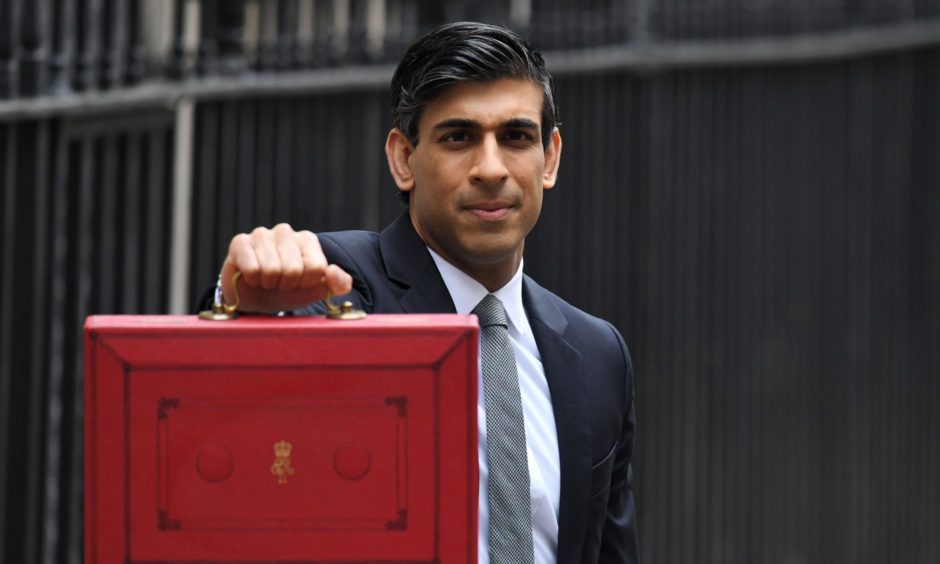A year ago, a walk through the park would bring you into contact with a constant stream of new dog owners.
No longer could parents tell their offspring it wouldn’t be fair to leave a dog home alone while everyone was out at work and school. Because no one was out at work or school. Soon there seemed to be more lockdown puppies than people on the streets.
One year on, those puppies are dogs – hungry, noisy, poopy.
The pensions triple lock is the lockdown puppy of policy. It seemed like the right idea at the time. Now it has chewed up the fabric of democracy and keeps leaving messes where nobody wants or expects them.
And it matters because this often overlooked bit of legislation has proved massively influential in bringing our politics to where they are now. And it will continue to do so -not least with regard to the Scottish independence debate that is set to dominate for the foreseeable future – until someone puts it down.
How the pensions triple lock helped Brexit
The pensions triple lock came into effect in 2011. The coalition government sought to avoid the sort of embarrassment that Gordon Brown ran into with his notoriously mean 75p extra offer to pensioners and, essentially, to buy the support of those voters most likely to turn out.
The triple lock guaranteed the annual increase in pensions would match either the equivalent rise in average earnings, price inflation or 2.5% – whichever is greatest.
It was a Liberal Democrat policy written into the coalition agreement. It was perhaps the Lib Dems’ worst idea ever (yes, even worse than Jeremy Thorpe). Not only did the Conservatives take all the electoral credit and crush their erstwhile coalition partners in 2015 but they actually unpicked a vital element of democracy – that voters ought to have a stake in the result of elections.
And that’s how the pensions triple lock facilitated Brexit.
‘Comfortable leavers’
Since the vote to leave the EU five years ago, much attention has been focused on the so-called “left behind” – those former Labour voters who were tempted by the Brexit offer because they had little to lose. Yet those voters alone were not enough to get Leave over the line.
Another vital part of the Brexit coalition is the group dubbed “comfortable leavers” in a recent report from the UK in a Changing Europe think tank.
These are the folk who live in what used to be sneeringly and accurately dubbed the stockbroker belt. The sorts of areas my daughter’s inner city cricket team visited last week. The sort of places where they actually have a club house and changing facilities as opposed to playing in the local public park. The sort of place they charge two quid for a cupcake after the match.
With more interest in inheritance tax than income support, these comfortable leavers are more concerned with what they can leave behind than the left behind.
So why did they vote for Brexit in the face of dire economic forecasts that could threaten the comfort they enjoy? Because the pensions triple lock rendered those threats null and void. Retirees’ income is inoculated against economic uncertainty by the promise that it will match inflation.
Even as the economy went into spasm last year and there were calls to rethink, downgrade or suspend the pensions triple lock, Chancellor Rishi Sunak stuck with it. And then the Tories had a corker at the elections earlier this month. The two are not unrelated.
Scottish independence could come down to pensions
However, when it comes to Scottish independence comfortable leavers will be harder to come by. A vote to leave the UK is likely a vote to give up the pensions triple lock.
Older folk could vote for Brexit – nostalgic for the past, insulated from economic woes in the future. That won’t be true in any Scottish independence vote.
The fate of pensions will be at best extremely unclear and at worst extremely unkind. The SNP insist Westminster will pay pensions. They haven’t been paying attention to the hardball negotiating tactics London took into the Brexit discussions.
Scotland’s demographics are skewed towards the old. Should Indyref2 come to pass, Project Fear will ramp up the pensions issue and sow uncertainty
That approach didn’t always pay off, in part because Britain is the smaller negotiating partner up against the EU, just as Scotland would be in any divorce from the rest of the UK.
Bear in mind that Scotland’s demographics are skewed towards the old. Should Indyref2 come to pass, Project Fear will ramp up the pensions issue and sow uncertainty. Those on the receiving end won’t be able to confidently vote to leave the UK without a worry their income will be significantly reduced – never mind that they won’t know what currency that pension will actually be paid in.
The pensions triple lock is a dog of a policy. But Scottish separatists must not underestimate its bite.
James Millar is a political commentator and author and a former Westminster correspondent for The Sunday Post












